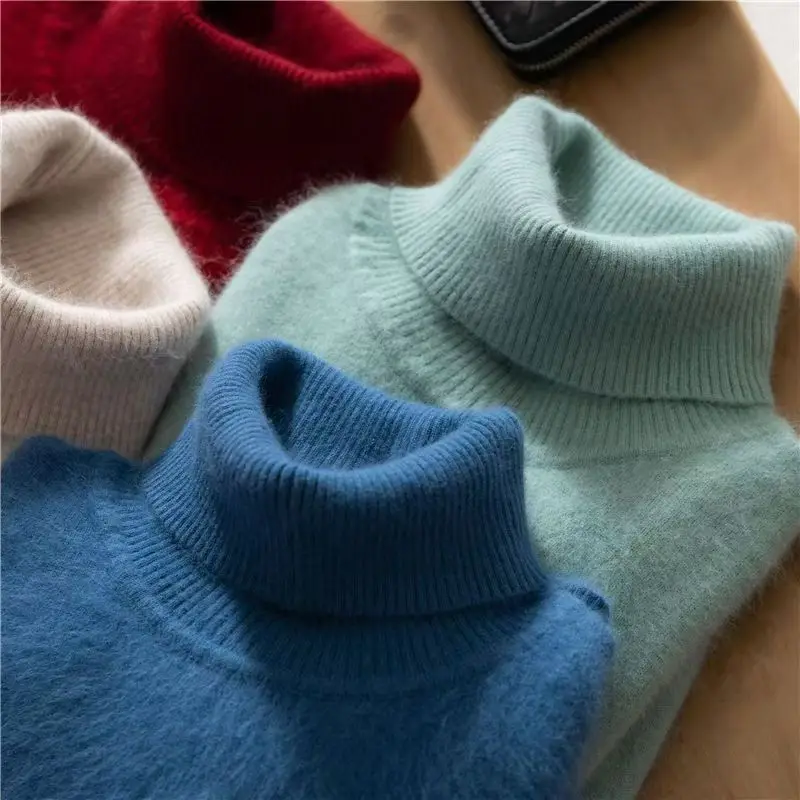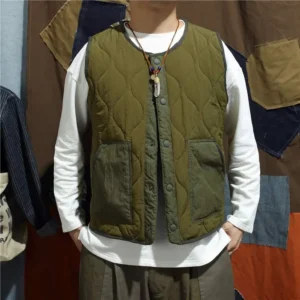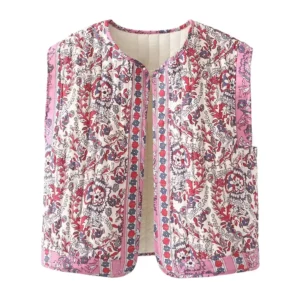Introduction: Why Cashmere Is Perfect For Seasonal Transitions
Cashmere stands as nature’s perfect transitional fabric, offering exceptional versatility when temperatures fluctuate between seasons. This luxurious material possesses unique properties that make it ideal for year-round wear, not just winter as commonly believed.
What makes cashmere truly remarkable for transitional weather:
- Temperature regulation capabilities that maintain comfort across 15-75°F (9-24°C)
- Exceptional breathability that prevents overheating
- Lightweight structure that provides warmth without bulk
- Moisture-wicking properties that keep you comfortable as temperatures change
The misconception that cashmere belongs exclusively to winter wardrobes overlooks its remarkable adaptability. Premium cashmere, particularly Grade A fibers measuring under 16 microns with lengths exceeding 36mm, offers an investment that transitions beautifully across seasons. The hollow core structure of cashmere fibers creates a natural insulation system that responds to your body’s needs throughout the day.
Creating a wardrobe anchored by quality cashmere pieces provides the foundation for year-round cashmere outfit ideas that can be styled differently as seasons shift. Whether you’re selecting cashmere sweaters or accessories, understanding cashmere’s unique properties helps maximize its transitional potential.
The Science Behind Cashmere’s Adaptable Comfort
Cashmere’s extraordinary comfort across seasons stems from its remarkable scientific properties. The secret lies in its unique fiber structure – each strand contains a hollow core that traps air molecules, creating natural insulation that adapts to your body’s temperature needs.
This premium fiber offers impressive temperature regulation capabilities:
- Natural thermoregulation that warms in cool conditions and cools when temperatures rise
- Three times warmer than wool at the same weight
- Microscopic scales on fiber surface that release excess heat while retaining necessary warmth
- Breathable composition that allows air circulation while wicking moisture away from the skin
The different weights and weaves of cashmere further enhance its transitional capabilities. Lightweight 12-gauge cashmere provides breathable warmth for spring and early fall, while medium-weight 10-gauge offers more substantial insulation for cooler days. The heaviest 7-gauge cashmere provides maximum warmth for the coldest transitional periods.
Understanding the differences between brushed versus traditional cashmere becomes particularly valuable when selecting pieces for transitional weather. Brushed cashmere offers additional softness and loft for slightly cooler days, while traditional cashmere maintains a sleeker profile that layers beautifully as temperatures fluctuate.
Essential Transitional Cashmere Pieces For Your Wardrobe
Building a transitional wardrobe starts with selecting versatile cashmere pieces that can be styled multiple ways as seasons change. These foundation items offer maximum adaptability while maintaining premium quality and timeless appeal.
Lightweight Pullovers and Crewnecks:
– Fine-gauge (12-14) options for layering without bulk
– Classic solid neutrals for maximum versatility (ivory, gray, navy, black)
– Relaxed silhouettes that work equally well tucked or untucked
– Can create over 20 different outfit combinations when paired with basic wardrobe items
Cardigans and Open-Front Styles:
– Button-front cardigans for adjustable coverage
– Open waterfall styles for elegant draping
– Mid-weight options (10-gauge) that provide warmth without heaviness
– Perfect for morning-to-afternoon temperature shifts
Versatile Wraps and Scarves:
– Lightweight oversized wraps that double as blankets for travel
– Medium-weight scarves for neck warmth that can be removed as temperatures rise
– Multi-way styling options (knotted, draped, belted)
– Instantly elevates basic outfits while providing practical warmth
Sleeveless and Short-Sleeve Options:
– Cashmere shells and tanks for core warmth under blazers
– Short-sleeve sweaters for moderate temperatures
– Perfect base layers that can stand alone when temperatures rise
The cashmere turtleneck deserves special mention as perhaps the ultimate transitional piece. This versatile style provides neck coverage for cooler mornings while looking equally sophisticated throughout the day. The streamlined silhouette layers perfectly under jackets or can be worn alone as temperatures rise.
Styling Cashmere For Spring Transition: Winter-to-Spring
As winter yields to spring, cashmere becomes the perfect bridge between seasons. The key to mastering this transition lies in embracing lighter color palettes and strategic layering techniques that accommodate fluctuating temperatures.
Spring transitional cashmere styling works best with:
- Soft pastel hues (lavender, mint, blush) that reflect the season
- Light neutrals (oatmeal, ivory, pearl gray) that brighten your wardrobe
- Strategic layering that allows for easy adjustment as temperatures rise
- Combinations with lightweight spring fabrics
Morning-to-Afternoon Outfit Formulas:
Lightweight cashmere cardigan + silk camisole + straight-leg jeans + ballet flats
Perfect for 40-55°F (4-13°C) mornings that warm to 65°F (18°C)Cashmere crewneck + button-down shirt + chinos + loafers
Ideal for business casual environments with indoor-outdoor transitionsCashmere wrap + fitted t-shirt + wide-leg linen pants + sandals
Elegant solution for unpredictable spring temperaturesShort-sleeve cashmere sweater + printed midi skirt + denim jacket + ankle boots
Versatile option that works from cool mornings through mild afternoons
The key to spring cashmere styling lies in understanding proper spring cashmere layering guide techniques. Start with lightweight bases, add your cashmere layer, and incorporate a removable outer layer for morning chill. Accessories like lightweight scarves can be added and removed as needed throughout the day.
Styling Cashmere For Fall Transition: Summer-to-Fall
Fall transitions call for cashmere in rich, seasonal hues that complement the changing landscape while providing comfort during cooling temperatures. The approach shifts toward gradual warmth-building through strategic layering.
Fall transitional cashmere styling emphasizes:
- Earth tones (camel, burnt orange, olive) that reflect the season
- Jewel tones (burgundy, emerald, sapphire) for elegant depth
- Layering techniques that trap warmth while maintaining style
- Combinations with fall-appropriate textures like denim, leather, and corduroy
Day-to-Night Outfit Formulas:
Cashmere turtleneck + leather jacket + straight-leg jeans + ankle boots
Perfect for 45-55°F (7-13°C) mornings that maintain cooler temperaturesCashmere cardigan + silk blouse + pencil skirt + pumps
Elegant office solution that transitions to evening eventsCashmere crewneck + denim shirt (underneath) + corduroy pants + leather sneakers
Smart casual option for weekend activities across temperature rangesCashmere wrap + fitted dress + tall boots + statement earrings
Sophisticated evening look with adjustable warmth
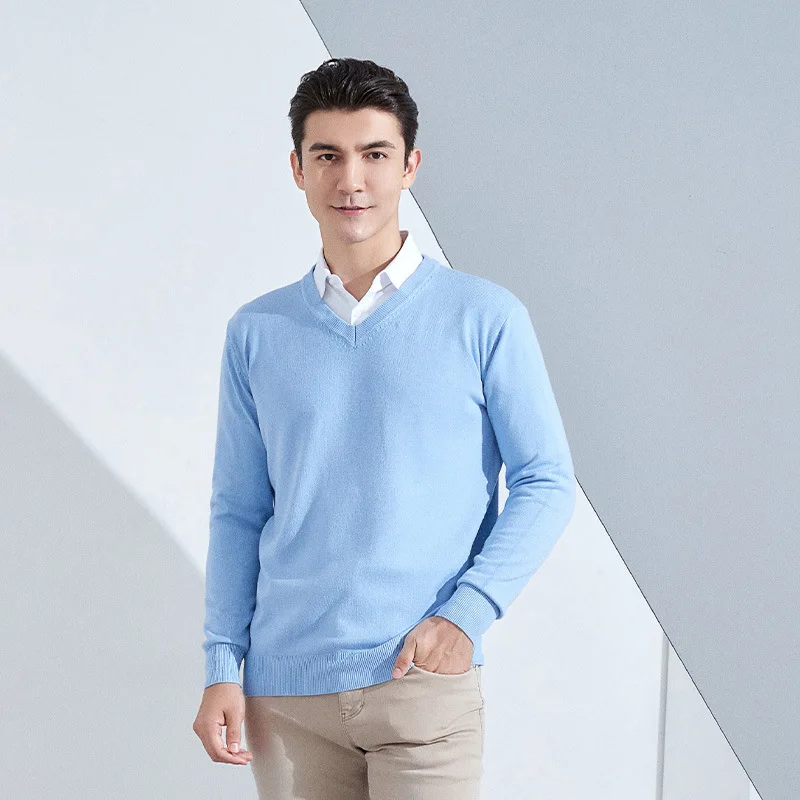
The men’s V-neck cashmere sweater becomes particularly versatile during fall transitions. This timeless style can be worn over button-downs for a business casual look, paired with t-shirts for casual weekends, or layered under blazers for more formal settings. The V-neckline provides the perfect frame for layered collars while maintaining a streamlined appearance.
Advanced Layering Techniques For Transitional Weather
Mastering transitional weather requires understanding advanced layering strategies that maximize cashmere’s natural properties while creating visually appealing outfits.
The Rule of Three for Perfect Temperature Balance:
- Base Layer: Lightweight, moisture-wicking fabrics (cotton, silk, technical materials)
- Middle Layer: Cashmere for insulation and temperature regulation
- Outer Layer: Weather-appropriate jacket or coat that can be added or removed
Strategic Thin-to-Thick Layering Principle:
Always start with the thinnest, most fitted layer against your skin, then gradually increase thickness with each additional layer. This approach prevents bulkiness while maximizing warmth and allowing for easy adjustment.
The Drape-and-Wrap Method:
Instead of fully wearing your outer cashmere layer, drape it over shoulders or wrap it around your waist during warmer periods. This keeps the piece accessible for when temperatures drop while adding visual interest to your outfit.
Color Coordination for Multilayered Outfits:
1. Anchor with neutrals for foundation pieces
2. Add one coordinating color across multiple layers
3. Consider complementary color theory when combining different pieces
Understanding effective layering tips for cashmere and denim provides particularly useful techniques for transitional seasons. The contrasting textures create visual interest while the varied weights offer practical temperature regulation.
Cashmere Care For Transitional Weather Conditions
Transitional seasons present unique challenges for cashmere care. Fluctuating temperatures, unexpected precipitation, and varying storage needs require special attention to maintain your cashmere’s quality and performance.
Protecting Cashmere During Unpredictable Weather:
– Keep a lightweight water-resistant jacket accessible to protect cashmere from sudden showers
– Use cashmere-safe fabric spray for light water resistance (test on an inconspicuous area first)
– Allow damp cashmere to fully air dry before storing
– Brush away surface moisture immediately with a clean, dry cloth
Storage Between Wears in Fluctuating Humidity:
– Allow cashmere to breathe for 24 hours after wearing before storing
– Use breathable cotton storage bags rather than plastic
– Add cedar blocks to storage areas to deter moths while absorbing excess moisture
– Store folded rather than hung to maintain shape
Refreshing Between Wears:
– Air cashmere outdoors in shade for 30 minutes to naturally refresh
– Use a gentle fabric freshening spray designed for delicate knits
– Spot clean small marks with lukewarm water and mild soap
– Consider specialized cashmere brushes to remove surface debris
While many wonder can you machine wash cashmere, the safest approach during transitional seasons is gentle hand washing. Machine washing, even on delicate cycles, can compromise the fiber’s natural properties that make it so effective for temperature regulation.
Versatile Cashmere Outfit Formulas For Different Occasions
Cashmere’s true versatility shines in its ability to adapt across different settings. These outfit formulas showcase how the same quality cashmere pieces can transition between varied occasions with simple styling adjustments.
| Occasion | Outfit Formula | Styling Details |
|---|---|---|
| Professional/Office | Cashmere turtleneck + tailored blazer + wool trousers + leather shoes | Layer with button-down underneath turtleneck for added formality; remove blazer as indoor temperatures rise |
| Casual Weekend | Cashmere crewneck + straight-leg jeans + leather sneakers + canvas jacket | Push up sleeves as temperatures warm; add textured scarf for cooler moments |
| Evening Event | Cashmere wrap dress + statement jewelry + heeled boots + clutch | Add tailored coat for arrival/departure; wrap provides adjustable coverage throughout event |
| Travel | Cashmere cardigan + comfortable t-shirt + stretch pants + slip-on shoes | Layer over light base for airplane temperature changes; doubles as blanket during travel |
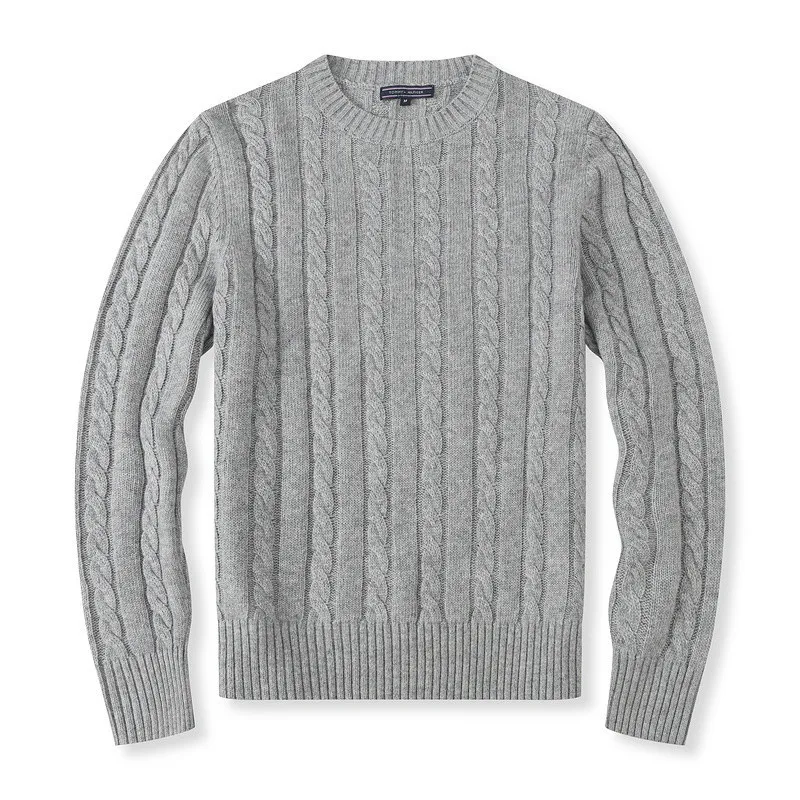
Each of these formulas benefits from understanding broader versatile cashmere pieces for all seasons. The key lies in selecting quality foundation pieces in timeless silhouettes that can be styled differently as both weather and occasions change.
Cashmere Wrap Sweaters, Women's Cashmere Pullovers
$75.89 Select options This product has multiple variants. The options may be chosen on the product pageCashmere Cable Knit Sweaters, Women's Cashmere Pullovers
Price range: $111.82 through $112.93 Select options This product has multiple variants. The options may be chosen on the product page- Price range: $171.47 through $181.33 Select options This product has multiple variants. The options may be chosen on the product page
Cropped Cashmere Sweaters, Women's Cashmere Pullovers
$155.77 Select options This product has multiple variants. The options may be chosen on the product page- Price range: $87.29 through $91.47 Select options This product has multiple variants. The options may be chosen on the product page
Oversized Cashmere Sweaters, Plus Size Cashmere Sweaters, Women's V-Neck Cashmere Sweaters
$136.87 Select options This product has multiple variants. The options may be chosen on the product page
Mixing Textures: Pairing Cashmere With Other Seasonal Fabrics
Cashmere’s luxurious softness creates beautiful textural contrasts when paired thoughtfully with other fabrics. These combinations enhance both visual interest and practical comfort during transitional seasons.
Cashmere + Silk:
– Ideal for early spring and early fall transitions
– Creates elegant drape and subtle sheen
– Lightweight combination that regulates temperature efficiently
– Try a silk blouse under a cashmere cardigan or cashmere-silk blend sweater
Cashmere + Linen:
– Perfect for late spring into summer
– Contrasts refined softness with natural texture
– Balances linen’s cooling properties with cashmere’s light insulation
– Pair a lightweight cashmere sweater with linen pants or a linen jacket
Cashmere + Leather:
– Sophisticated option for fall transitions
– Creates striking textural contrast
– Leather provides wind protection while cashmere insulates
– Try a cashmere sweater with leather jacket or leather-trimmed cashmere accessories
Cashmere + Cotton:
– Versatile year-round combination
– Creates breathable, comfortable foundation
– Layer cotton under cashmere for temperature regulation
– Pair cashmere cardigans with cotton dresses or t-shirts
Cashmere + Denim:
– Classic casual pairing for all transitional seasons
– Balances luxury with everyday practicality
– Denim provides structure while cashmere adds refinement
– Style cashmere sweaters with jeans in weights appropriate to the season
The cashmere wool cardigan represents another excellent textural blend. This combination offers enhanced durability while maintaining cashmere’s signature softness, making it ideal for transitional seasons when more frequent wearing and layering occur.
Is Cashmere Appropriate For Warmer Transitional Days?
Contrary to common belief, cashmere can be perfectly appropriate for warmer transitional days when temperatures reach 65-75°F (18-24°C). The key lies in selecting the right weights and styles that leverage cashmere’s natural temperature-regulating properties.
Cashmere Options for Warmer Days:
– Ultra-lightweight (14-16 gauge) cashmere for maximum breathability
– Sleeveless shells and tanks that provide core luxury without overheating
– Short-sleeve styles that offer arm freedom with torso coverage
– Open-knit cashmere that allows airflow while maintaining the luxury feel
Styling Strategies When Temperatures Rise Unexpectedly:
– Roll sleeves to expose forearms for natural cooling
– Layer over breathable natural fabrics that wick moisture
– Choose lighter colors that reflect rather than absorb heat
– Opt for looser silhouettes that allow air circulation
For the warmest transitional days, consider cashmere-silk or cashmere-cotton blends that maintain luxury while enhancing breathability. Alternatively, incorporate cashmere through accessories like lightweight scarves or wraps that can be removed when temperatures peak but added back as evening approaches.
Understanding how year-round luxury cashmere works helps maximize your investment across all seasons. The fiber’s natural properties make it far more versatile than many realize, especially when selecting appropriate weights and styles.
How To Build A Capsule Wardrobe Around Transitional Cashmere
Creating a capsule wardrobe centered on quality cashmere pieces offers maximum versatility with minimal items. This approach emphasizes quality over quantity, with each piece working harmoniously across seasons.
Core Cashmere Foundation (6 pieces):
1. Lightweight crewneck sweater in neutral (ivory or gray)
2. Classic cardigan in versatile navy or black
3. Turtleneck in seasonal color
4. V-neck or scoop neck in complementary neutral
5. Casual hoodie or half-zip style
6. Cashmere accessory (scarf, wrap, or beanie)
Complementary Non-Cashmere Items (6 pieces):
1. White button-down shirt
2. Quality t-shirt in neutral color
3. Well-fitted jeans or trousers
4. Versatile skirt or alternate bottom
5. Structured jacket or blazer
6. Weather-appropriate shoes (2 pairs minimum)
This 12-piece foundation creates over 30 distinct outfits, bringing the cost-per-wear of premium cashmere items well below that of lower-quality alternatives that require frequent replacement. The color strategy should focus on a cohesive palette with 2-3 neutrals and 1-2 complementary colors for maximum mix-and-match potential.
Starting with these basics allows for thoughtful addition of statement pieces over time, while maintaining the versatility and longevity that make seasonal outfit ideas with cashmere so effective year-round.
Elevating Basic Outfits With Transitional Cashmere Accessories
When full cashmere garments might be too warm or investment-prohibitive, accessories offer an accessible entry point to elevate everyday outfits with luxurious texture and practical warmth.
Cashmere Scarves and Wraps:
– Triangle fold for classic neck warmth
– Pashmina-style wrap for shoulder coverage
– Blanket scarf that transitions from neck to lap warmth
– Temperature threshold: Add below 65°F (18°C), remove above 70°F (21°C)
Cashmere Hats and Headbands:
– Slouchy beanies for casual warmth
– Fitted caps for refined protection
– Headbands that protect ears while maintaining hairstyles
– Temperature threshold: Add below 50°F (10°C)
Cashmere Gloves:
– Full-fingered for maximum warmth
– Fingerless for dexterity with core warmth
– Convertible styles with mitten covers
– Temperature threshold: Add below 45°F (7°C)
Small Cashmere Accent Pieces:
– Detachable collars for adding warmth to existing garments
– Sleeve warmers for extended wrist coverage
– Cashmere-lined leather accessories for luxurious warmth
The versatile nature of cashmere vests makes them particularly effective transitional accessories. They provide core warmth while allowing arm freedom, making them perfect for layering during temperature fluctuations throughout the day.
Does Quality Matter For Transitional Cashmere?
Quality becomes even more crucial for transitional cashmere pieces than for single-season items. The demands placed on these versatile garments require superior fiber quality, construction techniques, and thoughtful design to maintain performance across varying conditions.
Higher-quality cashmere significantly improves transitional performance through:
- Superior temperature regulation from longer fibers (36mm+)
- Enhanced durability from finer fibers (under 16 microns)
- Better moisture management from proper fiber processing
- Improved recovery and shape retention throughout the day
When examining transitional cashmere, look for:
– Two-ply construction minimum for appropriate durability
– Tight, even stitching that prevents cold air penetration
– Clean finishing at seams and edges
– Dense, smooth surface that resists pilling
While premium cashmere requires higher initial investment, its performance advantages during challenging transitional seasons justify the cost. Lower-quality cashmere often fails precisely when you need it most – during temperature fluctuations that test the fiber’s natural properties.
Understanding can cashmere be worn year-round helps explain why quality differences become most apparent in transitional pieces. The fiber characteristics that enable true four-season wear are only present in superior cashmere grades.
Common Mistakes To Avoid When Styling Transitional Cashmere
Even quality cashmere can underperform when styled incorrectly for transitional seasons. Avoiding these common pitfalls ensures you maximize both comfort and investment value.
1. Improper Layering Techniques
– Mistake: Wearing bulky layers under fine cashmere, distorting its shape
– Solution: Choose thin, smooth base layers that won’t create unwanted bulk
2. Seasonal Color Mismatches
– Mistake: Wearing deep winter colors during spring transition or pastel colors during fall
– Solution: Adjust color palette to align with the approaching season rather than the departing one
3. Ignoring Weather Forecasts
– Mistake: Dressing for yesterday’s weather instead of today’s predictions
– Solution: Check daily temperature ranges and precipitation probability before selecting cashmere items
4. Over-Reliance on Single Weight
– Mistake: Using the same heavy cashmere for early spring as for deep winter
– Solution: Invest in varied weights appropriate to different temperature ranges
5. Improper Storage Between Wears
– Mistake: Hanging cashmere, causing stretched shoulders and elongated silhouettes
– Solution: Fold cashmere between wears, allowing rest periods between uses
6. Neglecting Accessories for Temperature Adjustment
– Mistake: Wearing cashmere garments that can’t be easily modified throughout the day
– Solution: Incorporate scarves, layers, and adjustable elements
Understanding the versatility of cashmere cardigan styles provides excellent options for avoiding many of these common mistakes. Cardigans offer natural adjustment capabilities through opening, closing, or removing as temperatures change throughout the day.
By avoiding these pitfalls and embracing cashmere’s natural properties, you can create a transitional wardrobe that performs beautifully between seasons while maintaining timeless elegance. Estate Cloth’s premium cashmere pieces are specifically designed to excel during these challenging transitional periods, offering exceptional versatility alongside uncompromising quality.

